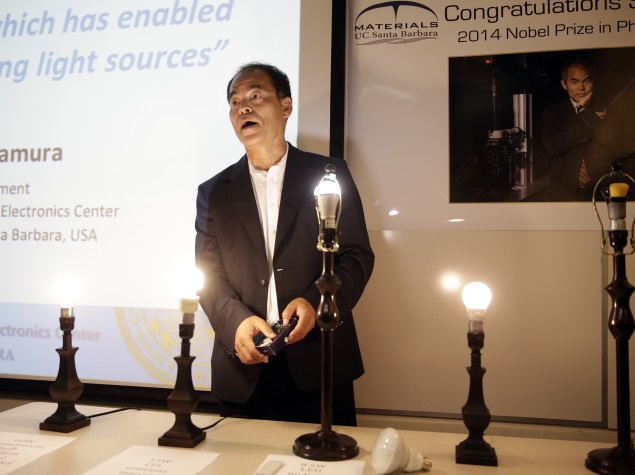- Home
- Science
- Science News
- Superfast LEDs to Improve Light Based Telecommunications
Superfast LEDs to Improve Light-Based Telecommunications

This year's Nobel Prize in physics was awarded for the discovery of how to make blue LEDs, allowing everything from more efficient light bulbs to video screens.
While the discovery has had an enormous impact on lighting and displays, the slow speed with which LEDs can be turned on and off has limited their use as a light source in light-based telecommunications.
"One of the applications we are targeting with this research is ultra-fast LEDs," said Maiken Mikkelsen, an assistant professor at the Duke University in the US.
"While future devices might not use this exact approach, the underlying physics will be crucial," Mikkelsen pointed out.
When fluorescent molecules are placed near intensified light, the molecules emit photons at a faster rate through an effect called Purcell enhancement.
The researchers found they could achieve significant speed improvement by placing fluorescent molecules in a gap between the nanocubes and a thin film of gold.
To attain the greatest effect, the researchers needed to tune the gap's resonant frequency to match the colour of light that the molecules respond to.
They used computer simulations to determine the exact size of the gap needed between the nanocubes and gold film to optimise the setup.
That gap turned out to be just 20 atoms wide. But that was not a problem for the researchers.
"When we have the cube size and gap perfectly calibrated to the molecule, that's when we see the record 1,000-fold increase in fluorescence speed," explained Gleb Akselrod from Mikkelsen's laboratory and first author of the study.
To make future light-based communications using LEDs practical, it is important for researchers to get photon-emitting materials up to speed.
The findings appeared online in the journal Nature Photonics.
For the latest tech news and reviews, follow Gadgets 360 on X, Facebook, WhatsApp, Threads and Google News. For the latest videos on gadgets and tech, subscribe to our YouTube channel. If you want to know everything about top influencers, follow our in-house Who'sThat360 on Instagram and YouTube.
Related Stories
- Samsung Galaxy Unpacked 2025
- ChatGPT
- Redmi Note 14 Pro+
- iPhone 16
- Apple Vision Pro
- Oneplus 12
- OnePlus Nord CE 3 Lite 5G
- iPhone 13
- Xiaomi 14 Pro
- Oppo Find N3
- Tecno Spark Go (2023)
- Realme V30
- Best Phones Under 25000
- Samsung Galaxy S24 Series
- Cryptocurrency
- iQoo 12
- Samsung Galaxy S24 Ultra
- Giottus
- Samsung Galaxy Z Flip 5
- Apple 'Scary Fast'
- Housefull 5
- GoPro Hero 12 Black Review
- Invincible Season 2
- JioGlass
- HD Ready TV
- Laptop Under 50000
- Smartwatch Under 10000
- Latest Mobile Phones
- Compare Phones
- Moto G15 Power
- Moto G15
- Realme 14x 5G
- Poco M7 Pro 5G
- Poco C75 5G
- Vivo Y300 (China)
- HMD Arc
- Lava Blaze Duo 5G
- Asus Zenbook S 14
- MacBook Pro 16-inch (M4 Max, 2024)
- Honor Pad V9
- Tecno Megapad 11
- Redmi Watch 5
- Huawei Watch Ultimate Design
- Sony 65 Inches Ultra HD (4K) LED Smart TV (KD-65X74L)
- TCL 55 Inches Ultra HD (4K) LED Smart TV (55C61B)
- Sony PlayStation 5 Pro
- Sony PlayStation 5 Slim Digital Edition
- Blue Star 1.5 Ton 3 Star Inverter Split AC (IC318DNUHC)
- Blue Star 1.5 Ton 3 Star Inverter Split AC (IA318VKU)

















